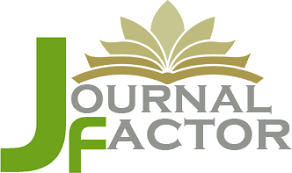Orthodontic Retainers
Review Paper
DOI:
https://doi.org/10.54361/ljmr.17-07Keywords:
Tooth stability, Removable retainers, Fixed retainers, Dual retention, Life-long retentionAbstract
To ensure that the results of fixed orthodontic therapy are maintained and do not relapse, it is crucial to retain and preserve the treatment outcomes. Retention is an essential aspect of orthodontics and can be viewed as the final stage of treatment. It is necessary to maintain an optimal esthetic and functional occlusion following orthodontic therapy.
Aim : The objective of the article is to acknowledge the significance of maintaining the outcomes of orthodontic therapy and to assess the various techniques used to fabricate fixed and removable appliances for retention.
Materials and Methods:
The present article evaluates the different protocols for lingual fixed retainers, as well as removable retentive appliances such as Hawley, Begg, and vacuum-formed retainers (VFR). Removable appliances have been used for retentive purposes for a long period of time. Bonded fixed retainers were introduced in the 1970s, and they have several advantages over removable retentive appliances, such as better esthetics, the absence of patient cooperation, and suitability for lifelong retention. Fixed retainers can be of conventional or digital type. Conventional fixed retainers can be fabricated and attached directly or indirectly to the teeth using a transfer tray. Moreover, bonded retainers can now be digitally manufactured using computer-aided design and computer-aided manufacturing (CAD-CAM).
Downloads
References
Lundström AF. Malocclusion of the teeth regarded as a problem in connection with the apical base. Am J Orthod Dentofac Orthop. 1925;11:591–602.
TWEED CH. Indications for the extraction of teeth in orthodontic procedure. Am J Orthod Oral Surg. 1944-1945;42:22-45.
Knierim RW. Invisible lower cuspid to cuspid retainer. Angle Orthod. 1973 Apr;43(2):218-20.
Zachrisson BJ. Third-generation mandibular bonded lingual 3-3 retainer. J Clin Orthod. 1995 Jan;29(1):39-48.
Rinchuse DJ, Miles PG, Sheridan JJ. Orthodontic retention and stability: a clinical perspective. J Clin Orthod. 2007;41(3):125-132.
Sauget E, Covell DA Jr, Boero RP, Lieber WS. Comparison of occlusal contacts with use of Hawley and clear overlay retainers. Angle Orthod. 1997;67(3):223-30.
Al-Suliaman S, Hashim HA, Cordovez JL. The reinforced removable retainer. J Contemp Dent Pract. 2006 May 1;7(2):145-52.
Consolaro A, Cardoso MA. Mandibular anterior crowding: normal or pathological? Dental Press J Orthod. 2018 Mar-Apr;23(2):30-36.
Ponitz RJ. Invisible retainers. Am J Orthod. 1971 Mar;59(3):266-72.
Sheridan JJ, LeDoux W, McMinn R. Essix retainers: fabrication and supervision for permanent retention. J Clin Orthod. 1993 Jan;27(1):37-45.
Meade MJ, Millett D. Retention protocols and use of vacuum-formed retainers among specialist orthodontists. J Orthod. 2013 Dec;40(4):318-25.
Wong PM, Freer TJ. A comprehensive survey of retention procedures in Australia and New Zealand. Aust Orthod J. 2004 Nov;20(2):99-106.
Singh P, Grammati S, Kirschen R. Orthodontic retention patterns in the United Kingdom. J Orthod. 2009 Jun;36(2):115-21.
Meade, M. J., & Millett, D. T. (2015). Vacuum-formed retainers: an overview. Dental Update, 42(1), 24–34.
Degirmenci Z, Ozsoy OP. Retention after fixed orthodontic treatment. Cumhur Dent J 2009; 12: 83-90.
Kartal Y, Kaya B. Fixed Orthodontic Retainers: A Review. Turk J Orthod. 2019 Jun;32(2):110-114.
Geserick M, Ball J, Wichelhaus A. Bonding fiber-reinforced lingual retainers with color-reactivating flowable composite. J Clin Orthod. 2004 Oct;38(10):560-2.
Zachrisson BU. Clinical experience with direct-bonded orthodontic retainers. Am J Orthod. 1977 Apr;71(4):440-8.
Artun J, Zachrisson B. Improving the handling properties of a composite resin for direct bonding. Am J Orthod. 1982 Apr;81(4):269-76.
Zachrisson BU. Multistranded wire bonded retainers: from start to success. Am J Orthod Dentofacial Orthop. 2015 Nov;148(5):724-7.
Sachdeva RC. SureSmile technology in a patient--centered orthodontic practice. J Clin Orthod. 2001 Apr;35(4):245-53.
Dogramaci, E. J., & Littlewood, S. J. Removable orthodontic retainers: practical considerations. British Dental Journal. 2021;230(11), 723–730.
Shah AA, Sandler PJ, Murray AM. How to ... place a lower bonded retainer. J Orthod. 2005 Sep;32(3):206-10.
Bovali E, Kiliaridis S, Cornelis MA. Indirect vs direct bonding of mandibular fixed retainers in orthodontic patients: a single-center randomized controlled trial comparing placement time and failure over a 6-month period. Am J Orthod Dentofacial Orthop. 2014 Dec;146(6):701-8.
Karaman AI, Polat O, Büyükyilmaz T. A practical method of fabricating a lingual retainer. Am J Orthod Dentofacial Orthop. 2003 Sep;124(3):327-30.
Edman Tynelius G, Bondemark L, Lilja-Karlander E. A randomized controlled trial of three orthodontic retention methods in Class I four premolar extraction cases -- stability after 2 years in retention. Orthod Craniofac Res. 2013 May;16(2):105-15.
Edman Tynelius G, Petrén S, Bondemark L, Lilja-Karlander E. Five-year postretention outcomes of three retention methods--a randomized controlled trial. Eur J Orthod. 2015 Aug;37(4):345-53.
Renkema AM, Renkema A, Bronkhorst E, Katsaros C. Long-term effectiveness of canine-to-canine bonded flexible spiral wire lingual retainers. Am J Orthod Dentofacial Orthop. 2011 May;139(5):614 21.
Littlewood SJ, Millett DT, Doubleday B, Bearn DR, Worthington HV. Retention procedures for stabilising tooth position after treatment with orthodontic braces. Cochrane Database Syst Rev. 2016 Jan 29;2016(1):CD002283.
Pandis N, Fleming PS, Kloukos D, Polychronopoulou A, Katsaros C, Eliades T. Survival of bonded lingual retainers with chemical or photo polymerization over a 2-year period: a single-center, randomized controlled clinical trial. Am J Orthod Dentofacial Orthop. 2013 Aug;144(2):169-75.
Kravitz ND, Grauer D, Schumacher P, Jo YM. Memotain: A CAD/CAM nickel-titanium lingual retainer. Am J Orthod Dentofacial Orthop. 2017 Apr;151(4) 812-815.
Reicheneder C, Hofrichter B, Faltermeier A, Proff P, Lippold C, Kirschneck C. Shear bond strength of different retainer wires and bonding adhesives in consideration of the pretreatment process. Head Face Med. 2014 Nov 28;10:51.
Downloads
Published
Issue
Section
License
Copyright (c) 2023 Libyan Journal of Medical Research

This work is licensed under a Creative Commons Attribution-NonCommercial-NoDerivatives 4.0 International License.
Open Access Policy
Libyan journal of medical Research (LJMR).is an open journal, therefore there are no fees required for downloading any publication from the journal website by authors, readers, and institution.
The journal applies the license of CC BY (a Creative Commons Attribution 4.0 International license). This license allows authors to keep ownership f the copyright of their papers. But this license permits any user to download , print out, extract, reuse, archive, and distribute the article, so long as appropriate credit is given to the authors and the source of the work.
The license ensures that the article will be available as widely as possible and that the article can be included in any scientific archive.
Editorial Policy
The publication of an article in a peer reviewed journal is an essential model for Libyan journal of medical Research (LJMR). It is necessary to agree upon standards of expected ethical behavior for all parties involved in the act of publishing: the author, the journal editorial, the peer reviewer and the publisher.
Any manuscript or substantial parts of it, submitted to the journal must not be under consideration by any other journal. In general, the manuscript should not have already been published in any journal or other citable form, although it may have been deposited on a preprint server. Authors are required to ensure that no material submitted as part of a manuscript infringes existing copyrights, or the rights of a third party.
Authorship Policy
The manuscript authorship should be limited to those who have made a significant contribution and intellectual input to the research submitted to the journal, including design, performance, interpretation of the reported study, and writing the manuscript. All those who have made significant contributions should be listed as co-authors.
Others who have participated in certain substantive aspects of the manuscript but without intellectual input should only be recognized in the acknowledgements section of the manuscript. Also, one of the authors should be selected as the corresponding author to communicate with the journal and approve the final version of the manuscript for publication in the LJMR.
Peer-review Policy
- All the manuscripts submitted to LJMR will be subjected to the double-blinded peer-review process;
- The manuscript will be reviewed by two suitable experts in the respective subject area.
- Reports of all the reviewers will be considered while deciding on acceptance/revision or rejection of a manuscript.
- Editor-In-Chief will make the final decision, based on the reviewer’s comments.
- Editor-In-Chief can ask one or more advisory board members for their suggestions upon a manuscript, before making the final decision.
- Associate editor and review editors provide administrative support to maintain the integrity of the peer-review process.
- In case, authors challenge the editor’s negative decision with suitable arguments, the manuscript can be sent to one more reviewer and the final decision will be made based upon his recommendations.













